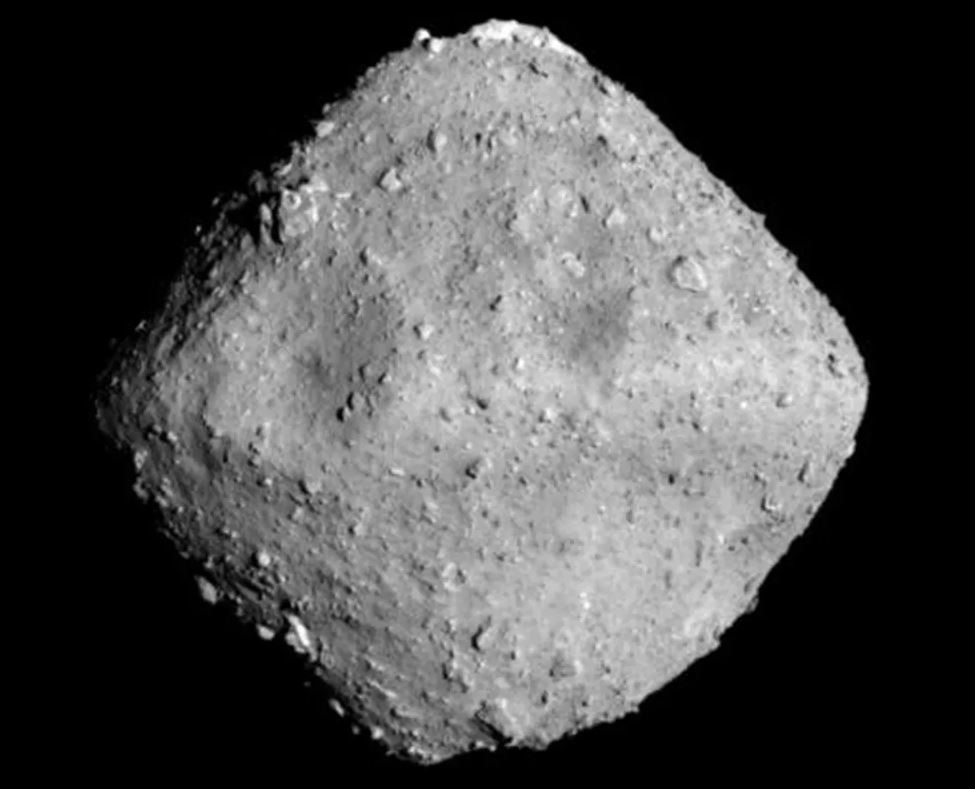
The Japan Aerospace Exploration Agency’s Hayabusa2 spacecraft successfully performed an artificial impact experiment on the surface of near-Earth asteroid Ryugu on April 5, 2019. The experiment entailed firing a two-kilogram copper projectile at the asteroid at a speed of two kilometers per second (about 4,500 miles per hour), resulting in a semi-circular crater 17 meters in diameter. The impact caused material located one meter beneath the surface of the asteroid to be ejected onto the area surrounding the target site. In this way, the experiment created a unique opportunity to study the surface and subsurface materials of Ryugu from orbit.
A study led by Kohei Kitazato of The University of Aizu (Fukushima, Japan) examined the near-infrared reflectance spectra obtained by the Hayabusa2 spacecraft to catalog any important differences between the surface and ejected materials. The researchers discovered instead that both the surface and ejected subsurface materials show the reflectance signature of hydroxyl (OH, or water of hydration). The presence of hydroxyl is expected in the phyllosilicate minerals that are thought to dominate in Ryuygu’s rocks. However, the observed hydroxyl signature was weaker than expected in the primary mineralogy, suggesting that Ryugu’s surface had been thermally altered with partial dehydroxylation (loss of water) sometime in its history. The presence of a feature of similar strength in both surface and subsurface samples provides a major clue as to when this alteration might have occurred.
The observed reflectance features are consistent with material having been heated to temperatures above 300oC (though above 700oC would have resulted in complete loss of hydroxyl). One hypothesis is that Ryugu made closer passes to the Sun in the past and thus experienced increased radiative heating earlier in its history. However, modeling by Kitazato and colleagues shows that the maximum temperatures experienced at one-meter depth on Ryugu during such a solar pass would be less than 200oC. Since radiative heating from the Sun cannot explain the spectral signatures of hydroxyl at depth, the authors concluded that the heating event likely occurred on Ryugu’s parent body, possibly due to impact heating when the material that eventually coalesced to form Ryugu was excavated. Hayabusa2 successfully returned samples from Ryugu to Earth in December, including a sample from near the artificial impact crater, which will allow scientists to study surface and subsurface materials in greater detail in a laboratory setting. READ MORE